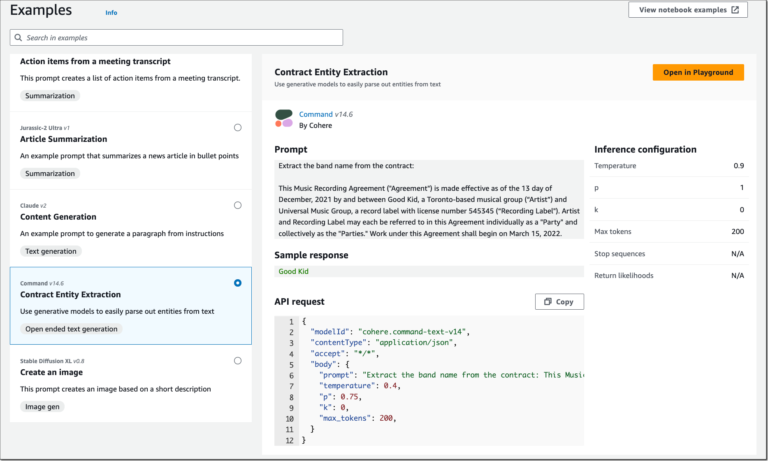Speed and growth are key to success in the fast-paced world of web applications. In-memory caching is a powerful new technique that stores often-used data in a temporary memory location. This makes applications faster and reduces wait times. Redis and Memcached are two popular in-memory caching solutions. Redis is versatile and has many features, while Memcached is simple and efficient. Understanding Redis and Memcached can be difficult, especially if you are new to in-memory caching. In this Redis vs Memcached blog, we will explain these two solutions in detail and help you choose the one that best suits your needs.
Introduction to In-Memory Caching
In-memory caching is a data optimization technique that strategically stores frequently accessed data items within a temporary storage area, typically a high-speed RAM (Random Access Memory). This localized data storage eliminates the need for repeated data retrieval from slower persistent storage devices, such as hard drives or databases. This approach significantly reduces data access latency, thereby enhancing application performance.
Users demand immediate responses and seamless interactions, necessitating applications that operate with agility and precision. To address these demands, developers and architects have turned to in-memory caching, a transformative technique that has revolutionized data access and application performance.
Overview of Redis
Redis, an acronym for Remote Dictionary Server, was conceived in 2009 by Salvatore Sanfilippo to address scalability challenges while developing a web log analyzer for his Italian startup. The initial prototype was implemented in Tcl and subsequently translated into C. Open-sourcing the project proved to be a pivotal decision, garnering significant traction and attracting the attention of tech giants such as GitHub and Instagram, who became early adopters of this innovative solution.
Key Features of Redis
1. Diverse Data Structures
Redis boasts support for an extensive array of data structures, encompassing:
- Strings: Designed for storing arbitrary text data.
- Lists: Ordered collections of elements.
- Sets: Unordered collections of unique elements.
- Hashes: Facilitates the mapping of keys to values.
- Sorted Sets: Ordered collections of elements accompanied by associated scores.
- Streams: Append-only data structures tailored for real-time data ingestion.
- Geospatial Indexes: Offers efficient indexing for location-based data.
2. Persistence
Redis provides robust data persistence options, ensuring data durability and mitigating the risk of loss in the event of server crashes. These options include:
- Snapshotting: Periodically dumps the entire dataset to disk.
- Append-only file (AOF): Logs all write operations to a file, enabling point-in-time recovery.
- RDB: Stores the dataset in a binary format, facilitating faster loading.
3. Replication
Redis supports replication to uphold data redundancy and enhance availability. Two replication modes are available:
- Master-slave replication: The master replicates data to one or more slaves, ensuring data consistency and fault tolerance.
- Multi-master replication: All nodes can act as masters, providing high availability and scalability.
4. Pub/Sub (Publish/Subscribe)
Redis features a pub/sub messaging system for efficient real-time data distribution. Publishers broadcast messages to subscribers, fostering seamless data exchange between applications.
5. Lua Scripting
Redis incorporates support for Lua scripting, empowering users to execute intricate data manipulation operations on the server side. This introduces flexibility and extensibility to Redis applications.
6. Transactions
Redis offers limited transaction support, enabling atomic operations on multiple keys. This capability proves valuable in maintaining data consistency, especially in critical scenarios.
7. Leaderboards
Redis includes built-in support for leaderboards, rendering it particularly well-suited for applications involving rankings and scores.
8. Horizontal and Vertical Scalability
Redis is designed for scalable architecture, allowing horizontal scaling through the addition of more servers to the cluster and vertical scaling by augmenting the memory capacity of existing servers. This adaptability equips Redis to effectively handle expanding workloads.
These features collectively position Redis as a potent and versatile data store suitable for a diverse range of applications, including caching, real-time data processing, leaderboards, and session management.
Pros of Redis
1. Exceptional Performance
Redis is renowned for its superior performance, rendering it an optimal selection for applications demanding minimal latency and elevated throughput. It exhibits the capability to manage millions of requests per second with negligible overhead.
2. Diverse Data Structures
In contrast to Memcached, which exclusively supports key-value pairs, Redis accommodates an extensive array of data structures, encompassing strings, lists, sets, hashes, and sorted sets. This versatility enhances its applicability across a wider spectrum of caching scenarios.
3. Data Persistence
Redis provides robust data persistence, enabling the retention of data on disk even after the server restarts. This feature ensures data durability and mitigates the risk of data loss in the event of server crashes.
4. Advanced Functionality
Beyond caching capabilities, Redis offers a myriad of advanced features, including pub/sub messaging, transactions, and leaderboards. These features contribute to its versatility, positioning it as a multifaceted tool for diverse data management tasks.
5. Scalability Options
Redis supports both horizontal and vertical scalability. Horizontal scaling is achieved by incorporating additional servers into the cluster, while vertical scaling involves augmenting the memory capacity of existing servers. This flexibility empowers Redis to adeptly handle expanding workloads.
Cons of Redis
1. Increased Complexity
Redis’s setup and management are more intricate compared to Memcached. Its configuration and maintenance demands are more substantial, potentially posing a hurdle for some users.
2. Resource-Intensive Nature
Redis consumes significantly more resources than Memcached, demanding more RAM and CPU capacity. This heightened resource utilization may raise concerns in environments with limited resources.
3. Limitations in Data Structure Support
While Redis offers a broader range of data structures than Memcached, it still faces some limitations. For instance, it lacks support for complex data structures like graphs or trees.
4. Restricted Transaction Support
Redis’s transaction support falls short compared to traditional databases. It lacks ACID (Atomicity, Consistency, Isolation, and Durability) guarantees, potentially rendering it unsuitable for applications demanding strong data consistency.
5. Cost Considerations
Redis Enterprise, the commercial version of Redis, can be financially burdensome for certain organizations. Open-source Redis presents a more cost-effective alternative, but it may lack some of the enterprise-grade features and support.
Use Cases of Redis
1. Web Application Session Caching
Redis serves as an efficient repository for user session data in web applications, particularly beneficial for platforms experiencing a significant volume of concurrent users. An illustrative application is seen in e-commerce, where Redis expedites the retrieval of user sessions without database queries, thereby enhancing the user experience during login and checkout processes.
2. Real-time Analytics
Utilizing Redis’s specialized data structures such as sorted sets and hashes, real-time analytics dashboards can be implemented. For instance, a social media platform leverages Redis to monitor and present the dynamic metrics of active users or trending posts in real-time.
3. Message Queuing and Chat Applications
Redis’s pub/sub capabilities facilitate the development of real-time message queuing systems, ideal for constructing chat applications that demand instantaneous message delivery to diverse subscribers.
4. Leaderboards and Counting
In gaming and social platforms, Redis is a preferred choice for managing leaderboards due to its adept handling of high write and read rates. For instance, an online gaming platform employs Redis to promptly update and display player rankings in real time.
5. Full-Page Cache (FPC)
Redis finds application as a Full-Page Cache (FPC) to store the outcomes of database queries, effectively alleviating the database load. A pertinent example is a Content Management System (CMS) utilizing Redis to cache pages, ensuring swift delivery without the need for regeneration with each request.
Overview of Memcached
Memcached’s inception can be traced back to 2003, when Brad Fitzpatrick, the creator of LiveJournal, developed it to address the performance challenges faced by the popular blogging platform. Initially crafted in Perl, Memcached was subsequently translated into C to enhance its performance and efficiency. Today, Memcached stands as a widely adopted in-memory caching solution, employed by prominent tech giants like Facebook, YouTube, and Twitter to optimize their applications and deliver seamless user experiences.
Key Features
1. Simple Key-Value Storage
Memcached employs a straightforward key-value data model, where each key is uniquely paired with a corresponding value. This simplified approach facilitates seamless data storage, retrieval, and management.
2. Exceptional Performance for Small Datasets:
Memcached excels in caching small datasets, typically under 1MB in size. It leverages efficient memory management techniques and optimized data structures to achieve remarkable performance.
3. Horizontal Scalability
Memcached seamlessly scales horizontally by incorporating additional servers into the cluster. This empowers it to handle increasing data volumes and traffic demands without compromising performance.
4. Comprehensive Language Integration
Memcached offers client libraries for a variety of programming languages, including PHP, Python, Ruby, Java, and C++. This facilitates integration with a broad spectrum of applications and development frameworks.
5. Efficient Data Compression
Memcached supports data compression algorithms, such as LZF and Snappy, to reduce the storage footprint of cached data. This further enhances memory utilization and performance.
6. LRU Eviction Policy
Memcached utilizes the Least Recently Used (LRU) eviction policy to manage cached data. When memory limits are reached, the least recently used items are automatically evicted to accommodate new data.
7. Asynchronous Data Retrieval
Memcached supports asynchronous data retrieval, enabling applications to continue processing while awaiting cached data retrieval. This enhances overall application responsiveness.
8. Multithreaded Architecture
Memcached employs a multithreaded architecture to efficiently handle multiple concurrent requests. This capability empowers it to serve a large number of clients and manage high-volume traffic.
9. Robust Error Handling and Monitoring
Memcached provides built-in error handling and monitoring capabilities to ensure the health and stability of the caching system. This facilitates prompt issue identification and resolution.
Pros of Memcached
Memcached presents a myriad of advantages, establishing it as a compelling solution for caching applications. Here is a succinct overview of the key merits associated with Memcached:
1. Exceptional Performance
Memcached surely excels in caching small datasets, typically below 1MB, showcasing remarkable performance through optimized memory management techniques and efficient data structures. It adeptly handles millions of requests per second with minimal overhead.
2. Simplicity and Efficiency
Memcached’s straightforward key-value data model simplifies data storage, retrieval, and management. Its lightweight architecture and streamlined operations contribute to overall efficiency.
3. Horizontal Scalability
Memcached seamlessly scales horizontally by incorporating additional servers into the cluster. This scalability feature allows it to accommodate expanding data volumes and increasing traffic demands without compromising performance.
4. Integration with Diverse Programming Languages
Memcached provides client libraries for a broad spectrum of programming languages, including PHP, Python, Ruby, Java, and C++. This facilitates seamless integration with various applications and development frameworks.
5. Efficient Data Compression
Supporting data compression algorithms such as LZF and Snappy, Memcached reduces the storage footprint of cached data, enhancing memory utilization and overall performance.
6. Least Recently Used (LRU) Eviction Policy
Employing the LRU eviction policy, Memcached effectively manages cached data. When the memory limit is reached, it automatically evicts the least recently used items, ensuring efficient memory usage.
7. Asynchronous Data Retrieval
Memcached supports asynchronous data retrieval, allowing applications to continue processing while awaiting cached data retrieval. This feature enhances the overall responsiveness of applications.
8. Multithreaded Architecture
Utilizing a multithreaded architecture, Memcached efficiently handles multiple concurrent requests, enabling it to serve a large number of clients and manage high-volume traffic effectively.
9. Robust Error Handling and Monitoring
Memcached incorporates built-in error handling and monitoring capabilities, ensuring the health and stability of the caching system. This facilitates prompt identification and resolution of issues.
10. Widespread Adoption and Community Support
Enjoying widespread adoption, Memcached benefits from an active community of developers and users. This fosters access to extensive documentation, troubleshooting resources, and potential contributions to the project.
11. Open-Source and Cost-Effective
As an open-source project, Memcached is freely available for use and modification. This eliminates licensing costs, providing the flexibility for customization and integration with specific requirements.
Cons of Memcached
Despite the numerous benefits Memcached offers, it is essential to acknowledge certain limitations:
1. Limited Data Structure Support
Memcached predominantly supports key-value data, which may be insufficient for applications necessitating more intricate data structures such as lists, sets, or hashes. In such scenarios, Redis could present a more fitting alternative.
2. Lack of Persistence
Memcached lacks built-in data persistence, implying that cached data is susceptible to loss in the event of server restarts or crashes. To ensure data durability, external persistence mechanisms must be implemented, introducing additional complexity and overhead.
3. Limited Transaction Support
Memcached’s transaction support is restricted compared to traditional databases, lacking ACID (Atomicity, Consistency, Isolation, Durability) guarantees. This may prove unsuitable for applications requiring robust data consistency in critical operations.
4. Potential for Data Loss During Eviction
Memcached’s LRU eviction policy introduces the potential for data loss if frequently accessed items are evicted due to memory constraints. Applications should judiciously consider data access patterns and memory limits to minimize the impact of eviction.
5. Resource Consumption
Although Memcached is generally efficient, caching substantial data volumes can consume considerable RAM and CPU resources. Vigilant monitoring and judicious resource allocation are imperative to forestall performance bottlenecks.
6. Maintenance and Monitoring
Memcached necessitates ongoing maintenance and monitoring to ensure optimal performance and stability. This involves tasks such as managing memory limits, fine-tuning eviction policies, and addressing potential issues promptly.

Use Cases of Memcached
1. Efficient String Caching
Memcached excels in serving as an efficient caching layer for small to medium-sized websites, particularly those requiring a streamlined approach for caching string-based data. For instance, blog sites can leverage Memcached to store and retrieve cached results of database queries for blog posts, thereby accelerating content delivery to visitors.
2. Database Query Result Caching
A key advantage of Memcached is its ability to alleviate database load. By caching frequently accessed database query results, Memcached significantly reduces the database workload, enhancing overall system performance. Online catalog systems, for example, can optimize performance by caching product listings and details using Memcached, resulting in improved response times and a more seamless user experience.
3. Caching HTML Fragments
Memcached efficiently addresses the caching of static HTML fragments, known for their computational expense in generation. News websites, as an illustration, can benefit from Memcached by caching article snippets on the homepage, leading to faster page load times and heightened user engagement.
4. API Rate Limiting
Memcached’s atomic increment and decrement operations prove invaluable for implementing API rate limiting. RESTful APIs can effectively utilize Memcached to monitor the number of requests from a specific user within a defined timeframe, thereby preventing API abuse and ensuring equitable resource allocation.
5. Session Store
Despite lacking persistence, Memcached remains a suitable choice as a session store for applications where session data is transient, and its loss has minimal impact. Stateless microservices, for instance, can adeptly utilize Memcached for session management without compromising the overall stability of the system.
Quick Comparison of Redis vs Memcached
| Features | Redis | Memcached |
| Data structures | Data Structures supported by the system include strings, lists, sets, hashes, sorted sets, streams, geospatial indexes, sets, hashes, and sorted sets. | Data structures include only Strings |
| Data persistence | Redis incorporates data persistence. | Memcached does not retain data after a shutdown. |
| Pub/Sub Messaging | Redis features pub/sub messaging. | It does not feature pub/sub messaging. |
| Performance | Very high for small data sets | Good for all data sizes. |
| Transactions | Transactions are very limited | Memcache does not support transactions. |
| Scalability | Redis supports both horizontal and vertical scalability. | It supports only horizontal scalability |
| Complexity | Redis has a high level of complexity. | It has very low complexity. |
| Resource Utilization | It is more resource-intensive. | Memcached is Less resource-intensive. |
Redis vs. Memcached: Which one is Best?
The selection between Redis and Memcached indeed depends entirely on the specific requirements of the application. While Redis offers greater flexibility and versatility, Memcached excels in certain scenarios and demonstrates superior performance in handling large datasets. Its multi-threaded architecture provides an advantage, particularly when dealing with big data workloads.
Redis’s support for data operations, enabled by its diverse data types, can expedite specific use cases by minimizing network I/O counts and data sizes. These data operations, such as GET and SET, are comparable in complexity to those in Memcached.
Conclusion
In conclusion, the choice between Redis and Memcached hinges on the specific requirements of your project. While Redis offers versatility with rich data structures and advanced features, Memcached excels in simplicity and seamless scalability. Carefully assess your project’s demands, considering factors like data structure complexity, persistence needs, and scalability requirements. Understanding the strengths of both solutions will guide you in selecting the ideal in-memory cache for your development goals.
In case you have found a mistake in the text, please send a message to the author by selecting the mistake and pressing Ctrl-Enter.





